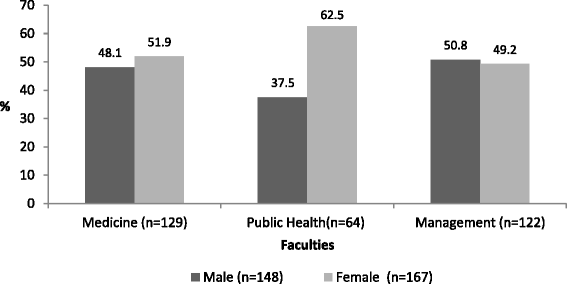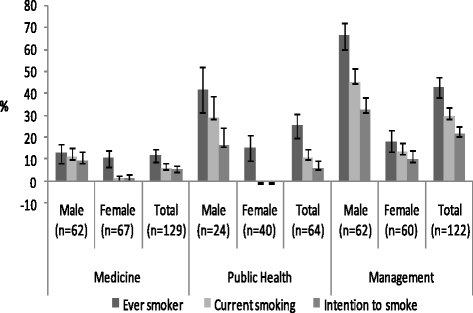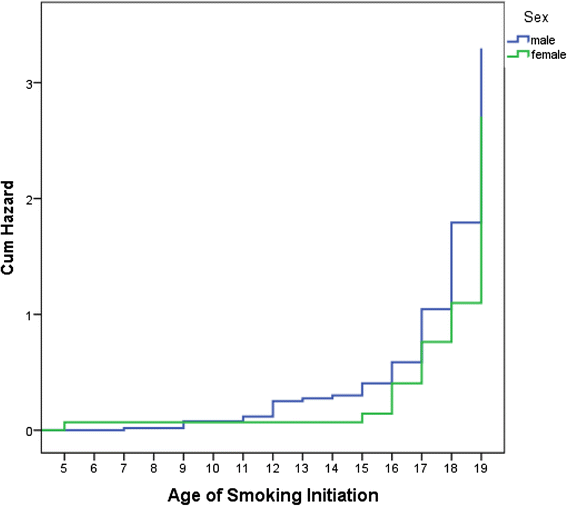Perceived benefits and health risks of cigarette smoking among young adults: insights from a cross-sectional study
- PMID: 26236178
- PMCID: PMC4521492
- DOI: 10.1186/s12971-015-0044-9
Perceived benefits and health risks of cigarette smoking among young adults: insights from a cross-sectional study
Abstract
Background: Perceptions of smoking-related health risks and benefits among young adults (18-24 years) and their smoking behaviour have not been adequately studied in low-income countries like Nepal. This study has examined the perceived risks and the benefits of smoking among young adults who smoke vs. don't smoke.
Methods: A cross-sectional study was carried out from August to September 2013 among 315 young adults (18-24) from four conveniently selected private colleges of different faculties in Kathmandu Metropolis. The anonymous, self-administrated and semi structured questionnaire contained the information on individual information; smoking behaviour; and perceptions on smoking-related risks and benefits. Kaplan-Meier analysis was used to identify the mean age of smoking initiation. Cox proportion hazard regression was used to assess the relationship between current smoking behaviours and the perceived risks and the benefits of smoking.
Results: Overall, the prevalence of current smoking was 16.2 % (Male =28.4 % and female =5.38 %). The mean age of smoking initiation was 16.6 and 17.7 years for male and female respectively. The risk of becoming a current smoking being a management student was higher (HR = 4.72, 95 % CI: 2.19; 10.20) than being a medical student. The risk of current smoking behaviour significantly increased with those who believed that smoking was enjoyable (HR = 4.74, 2.58; 8.72); would help to deal with problems or stress (3.19, 1.76; 5.79); would feel comfortable with friends (4.29, 2.33; 7.92); would be relaxing (6.95, 3.60; 13.43); and something to do when feel bored (3.42, 1.91; 6.13). The young adults who believed that smoking would make yellow teeth (0.53, 0.30; 0.94) and yellow nail (0.53, 0.29; 0.95); and would be bad to their health (0.45, 0.21; 0.98) were significantly at lower risk of becoming a current smoking.
Conclusion: Positive perceptions related to smoking are common among young adults. To discourage smoking, future intervention programs should focus communicating not only health risks but also counteract perception of benefits related to smoking.
Keywords: College students; Current smoking; Hazard ratio; Perceived benefits; Perceived health risks.
Figures



Similar articles
-
Perceived risks and benefits of cigarette smoking among Nepalese adolescents: a population-based cross-sectional study.BMC Public Health. 2013 Mar 2;13:187. doi: 10.1186/1471-2458-13-187. BMC Public Health. 2013. PMID: 23452549 Free PMC article.
-
Perceived risk of cigarette smoking among college students.J Nepal Health Res Counc. 2011 Oct;9(2):176-80. J Nepal Health Res Counc. 2011. PMID: 22929849
-
Predictors of health behaviours in college students.J Adv Nurs. 2004 Dec;48(5):463-74. doi: 10.1111/j.1365-2648.2004.03229.x. J Adv Nurs. 2004. PMID: 15533084
-
In Their Own Words: Young Adults' Menthol Cigarette Initiation, Perceptions, Experiences and Regulation Perspectives.Nicotine Tob Res. 2018 Aug 14;20(9):1076-1084. doi: 10.1093/ntr/ntx048. Nicotine Tob Res. 2018. PMID: 28339669 Free PMC article.
-
Perceived Deterrence of Cigarette Use and Smoking Status Among Active Duty Military Personnel.Mil Med. 2017 May;182(5):e1733-e1741. doi: 10.7205/MILMED-D-16-00201. Mil Med. 2017. PMID: 29087918
Cited by
-
Effectiveness of the Portuguese version of Fume in adolescents' health literacy about tobacco.Rev Lat Am Enfermagem. 2022;30:e3513. doi: 10.1590/1518-8345.5455.3513. Rev Lat Am Enfermagem. 2022. PMID: 35293565 Free PMC article.
-
Identifying Predictors of Smoking Switching Behaviours Among Adult Smokers in the United States: A Machine Learning Approach.Cureus. 2024 Sep 11;16(9):e69183. doi: 10.7759/cureus.69183. eCollection 2024 Sep. Cureus. 2024. PMID: 39398699 Free PMC article.
-
Behavior of Lung Health Parameters among Smokers and Secondhand Smokers.J Environ Public Health. 2018 Mar 4;2018:5217675. doi: 10.1155/2018/5217675. eCollection 2018. J Environ Public Health. 2018. PMID: 29686716 Free PMC article.
-
Prevalence of Tobacco Smoking and Factors Associated with the Initiation of Smoking among University Students in Dhaka, Bangladesh.Cent Asian J Glob Health. 2017 Jan 6;6(1):244. doi: 10.5195/cajgh.2017.244. eCollection 2017. Cent Asian J Glob Health. 2017. PMID: 29138736 Free PMC article.
-
Prevalence of Tobacco Products' Use and Associated Factors Among Adolescents in Morocco: A Systematic Review.Subst Use. 2024 Aug 21;18:29768357241272370. doi: 10.1177/29768357241272370. eCollection 2024 Jan-Dec. Subst Use. 2024. PMID: 39175911 Free PMC article. Review.
References
-
- Alwan A. Global Status Report on Noncommunicable Diseases 2010. Geneva: World Health Organization; 2011.
-
- World Health Organization . Noncommunicable Diseases Country Profiles 2011. Geneva: World Health Organization; 2011.
-
- Ministry of Health and Population [Nepal] Noncommunicable Diseases Risk Factors: STEPS Survey Nepal 2013. Kathmandu: Ministry of Health and Population; 2014.
-
- Ministry of Health and Population[Nepal] Global Health Students Profesional Survey:2011. Kathmandu: Ministry of Health and Population; 2012.
-
- Aryal UR, Lohani S. Perceived risk of cigarette smoking among college students. JNHRC. 2011;9:176–80. - PubMed
LinkOut - more resources
Full Text Sources
Other Literature Sources
Research Materials

